The following article was found in a U.S. newspaper in 2010:
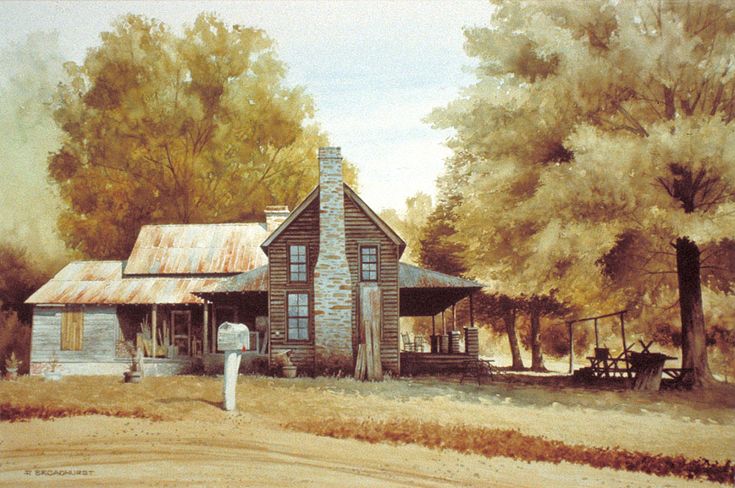
The 91-year-old widow lived by herself in a tumbledown house on a desolate country road. But she wasn’t alone, not really, not as long as she could visit her husband and twin sister. No matter they were already dead. Jean S. simply had their embalmed corpses dug up and stored them at her house — in the case of her late husband, for more than a decade — tending to the remains as best she could until police were finally tipped off last month, much to her dismay. “Death is very hard for me to take,” she told an interviewer.
As state police finish their investigation into a singularly macabre case — no charges have been filed — Jean wishes she could be reunited with James, her husband of nearly 60 years, who died in 1999, and June, the twin who died last October. But their bodies are with the Bradford County coroner now, at least temporarily off limits to the woman who loved them best. District Attorney Daniel Barrett said Tuesday that Jean plans to build a crypt on the property. “If she does that, the bodies will be released for that purpose,” he said. “Otherwise they will be re-interred.”
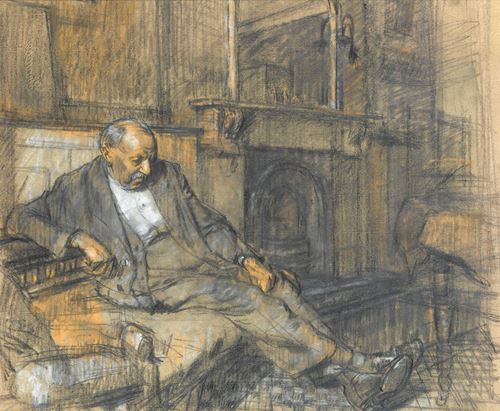
From time to time, stories of exhumed bodies are reported, but rarely do those involved offer an explanation. Jean, seeming more grandmother than ghoul, holds little back as she describes what happened. She knows what people must think of her. But she had her reasons, and they are complicated, a bit sad, and in their own peculiar way, sweet [says the journalist]. Dressed smartly in a light blue shirt and khaki skirt, silver hoops in her ears, her white hair swept back and her brown eyes clear and sharp, she offers a visitor a slice of pie, then casts a knowing look when it’s declined. “You’re afraid I’ll poison you,” she says.
On a highboy in the corner of the dining room rests a handsome, black-and-white portrait of Jean, then a stunner in her early 20’s, and James, clad in his Army uniform. It was taken after their 1942 marriage, but before his service in World War II. After the war, James worked at a General Electric Corp. plant in N.Y., then as an auto mechanic. He succumbed to Parkinson’s disease on May 21, 1999. Next to that photo there is a smaller color snapshot of Jean and June, taken when they were in their late 80’s.
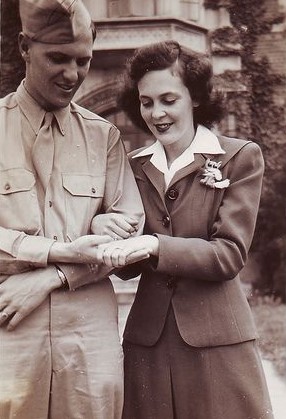
In many ways, Jean shared a closer bond with her twin than her husband. Though June lived more than 200 miles away, they talked by phone several times a week, and June wrote often. Then, last year, June was diagnosed with cancer. She was in a lot of pain when Jean came to visit. The sisters shared a bed, and Jean rubbed her back. “I’m real glad you’re here,” June said.
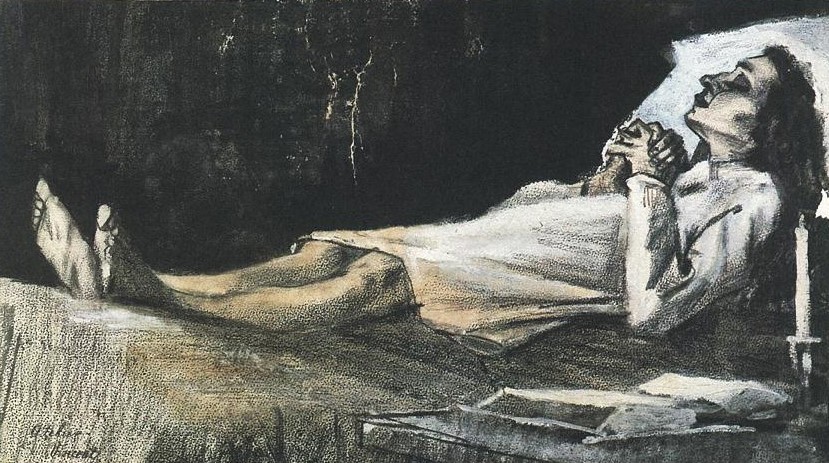
On Oct. 3, June died. She was buried in her sister’s backyard — but not for long. “I think when you put them in the (ground), that’s goodbye, goodbye,” Jean said. “In this way I could touch her and look at her and talk to her.” She kept her sister, who was dressed in her “best housecoat,” on an old couch in a spare room off the bedroom. Jean sprayed her with expensive perfume that was June’s favorite. “I’d go in, and I’d talk, and I’d forget,” Stevens said. “I put glasses on her. When I put the glasses on, it made all the difference in the world. I would fix her up. I’d fix her face up all the time.”
She offered a similar rationale for keeping her husband on a couch in the detached garage. James, who had been laid to rest in a nearby cemetery, wore a dark suit, white shirt and blue knitted tie. “I could see him, I could look at him, I could touch him. Now, some people have a terrible feeling, they say, ‘Why do you want to look at a dead person? Oh my gracious,’” she said. “Well, I felt differently about death.” Part of her worries that after death, there’s … nothing. “Is that the grand finale?” But then she gets up at night and gazes at the stars in the sky and the deer in the fields, and she thinks, “There must be somebody who created this. It didn’t come up like mushrooms.”

So she is ambivalent about God and the afterlife. “I don’t always go to church, but I want to believe,” Stevens said. Dr. Helen Lavretsky, a psychiatry professor at UCLA who researches how the elderly view death and dying, said people who aren’t particularly spiritual or religious often have a difficult time with death because they fear that death is truly the end. For them, “death doesn’t exist,” she said. “They deny death.” Stevens, she said, “came up with a very extreme expression of it. She got her bodies back, and she felt fulfilled by having them at home. She’s beating death by bringing them back.”
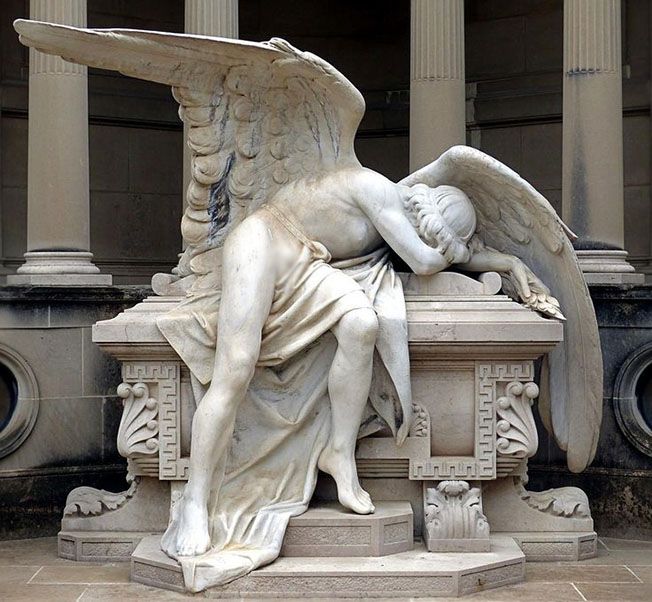
There was another reason that Stevens wanted them above ground. She is severely claustrophobic, and so was her sister; she was horrified that the bodies of her loved ones would spend eternity in a casket in the ground. “That’s suffocation to me, even though you aren’t breathing,” she said. So she said she had them dug up, both within days of burial. She managed to escape detection for a long time. Otherwise forthcoming, Stevens is vague when asked about who exhumed the bodies and who knew of her odd living arrangement.
[Edited from an article by Michael Rubinkum, 2010]
Why does this behavior seem so bizarre to us? Don’t most of us think of ourselves and others as being the bodies we inhabit? Why, when a person dies, do we no longer want to hang onto that person’s body? Why do we bury it or burn it? The reason is because instinctively most of us understand that the person we loved is now gone, and what is left has none of the symptoms of life. It is not alive, it has no awareness or consciousness, it has no personality, it cannot relate to me, it cannot love me. These are all symptoms of a living soul, not of dead matter. The body is alive when the conscious soul is present. Once the soul leaves it is simply dead matter.
Inferior and Superior Energies
The Supreme Lord has two categories of energies which together make up the material creation:
Earth, water, fire, air, ether, mind, intelligence and false ego – altogether these comprise My separate material energies. Beyond this inferior nature, O mighty armed Arjuna, there is a superior energy of Mine – the living beings who are struggling with material nature and are sustaining the universe.
[Bhagavad-gita 7:45]
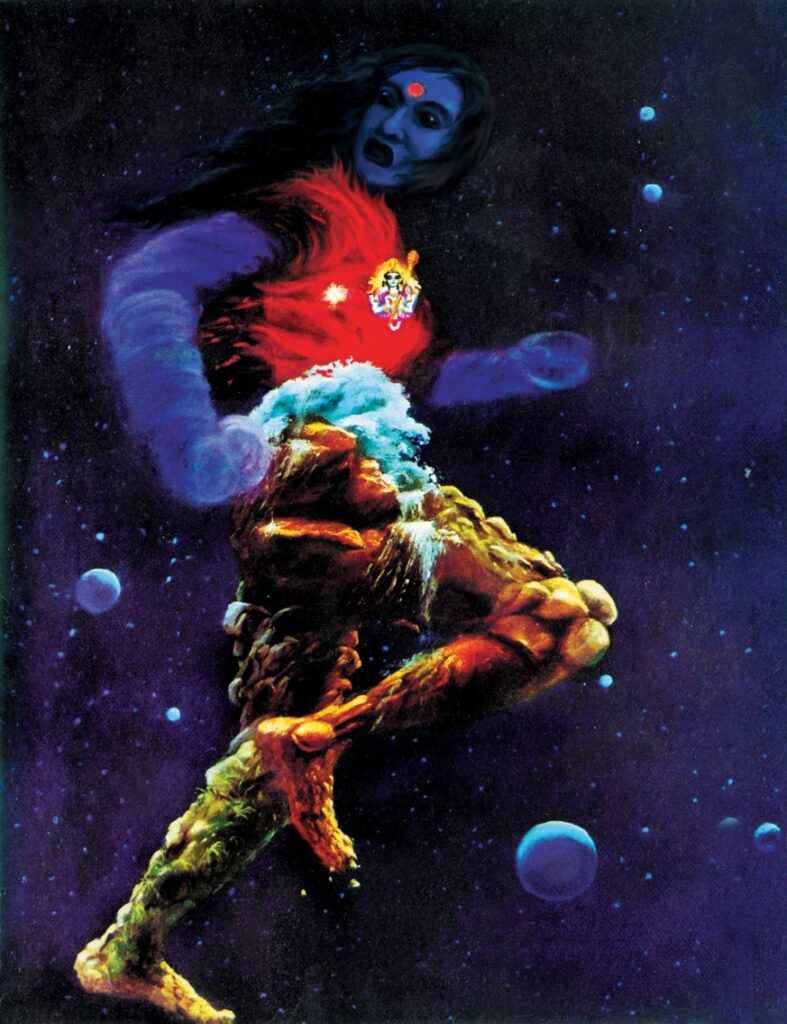
Material energy is called the inferior energy because it is not living. It is simply dead matter. It has no awareness or consciousness. Material energy is inactive and lacking in purpose. It is lifeless and has no personality because it is not a person.
Spiritual energy is superior because it is alive. Each and every particle of spiritual energy is aware and active, displaying purpose. Spiritual energy has personality because it is a person.
There are various names for the spiritual spark or life particle. It is called a soul, an atma, a spirit soul or self. The soul is eternally existing because it is indestructible. Some of its wonderful qualities are described in the Bhagavad-gita:
Know that which pervades the entire body is indestructible. No one is able to destroy the imperishable soul. Only the material body of the indestructible, immeasurable and eternal living entity is subject to destruction; therefore fight, O descendent of Bharata.
[Bhagavad-gita 2:17-18]
For the soul there is never birth nor death. Nor having once been, does he ever cease to be. He is unborn, eternal, ever-existing and primeval. He is not slain when the body is slain.
[Bhagavad-gita 2:20]
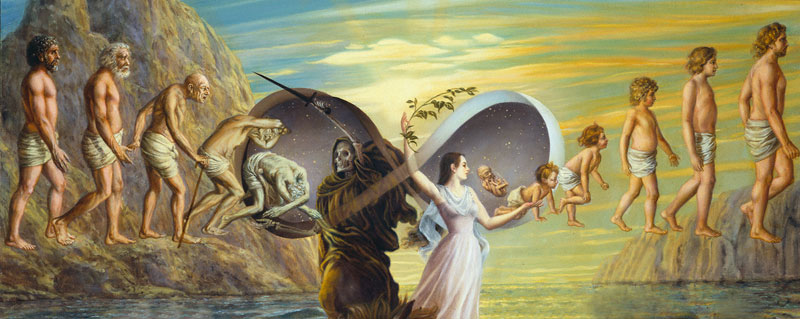
The soul can never be cut into pieces by any weapon, nor can he be burned by fire, nor moistened by water, nor withered by the wind. This individual soul is unbreakable and insoluble, and can be neither burned nor dried. He is everlasting, all pervading, unchangeable, immovable and eternally the same.
[Bhagavad-gita 2:23-24]
Srila Bhaktivedanta Swami describes the soul’s influence on the body in the purport to Bhagavad-gita 2:17:
This very small spiritual spark is the basic principle of the material body, and the influence of such a spiritual spark is spread all over the body as the influence of the active principle of some medicine spreads throughout the body. This current of the spirit soul is felt all over the body as consciousness, and that is the proof of the presence of the soul. Any layman can understand that the material body minus consciousness is a dead body, and this consciousness cannot be revived in the body by any means of material administration. Therefore, consciousness is not due to any amount of material combination, but to the spirit soul. In the Mundaka Upanisad, the measurement of the soul is further explained:
The soul is atomic in size and can be perceived by perfect intelligence. This atomic soul is floating in the five kinds of air [prana, apana, vyana, samana, and udana], is situated within the heart, and spreads its influence all over the body of the embodied living entities. When the soul is purified from the contamination of the five kinds of material air, its spiritual influence is exhibited.
[Mundaka Upanisad 3:1:9]
The soul’s essence is life itself, and it is qualitatively one with the Supreme Person:
The living entity is eternal and imperishable because he actually has no beginning and no end. He never takes birth or dies. He is the basic principle of all types of bodies, yet he does not belong to the bodily category. The living being is so sublime that he is equal in quality to the Supreme Lord. Nonetheless, because he is extremely small, he is prone to be illusioned by the external energy, and thus he creates various bodies for himself according to his different desires.
[Srimad Bhagavatam 6:16:9]
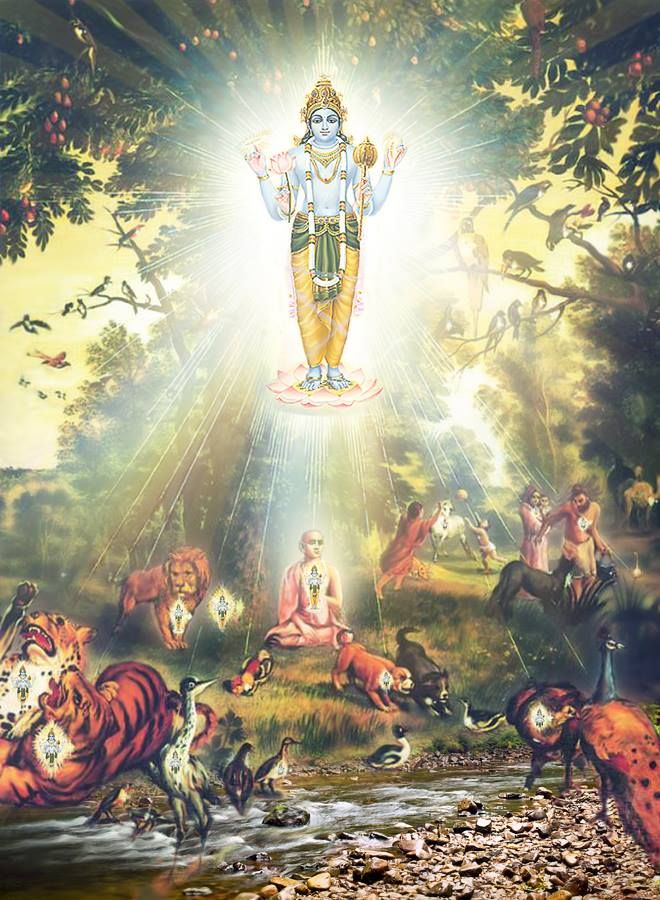
Lord Brahma, the head of our disciplic succession, prays:
isvarah parama Krishna
(The Supreme Lord is Krishna)
sat chit ananda vigraha
(His personal form is eternal, full of knowledge and always blissful)
anadir adir govinda
(He is the primeval Lord Govinda, the origin of all)
sarva karana karanan
(But He Himself has no origin, for He is the cause of all causes)
[Brahma Samhita 5:1]
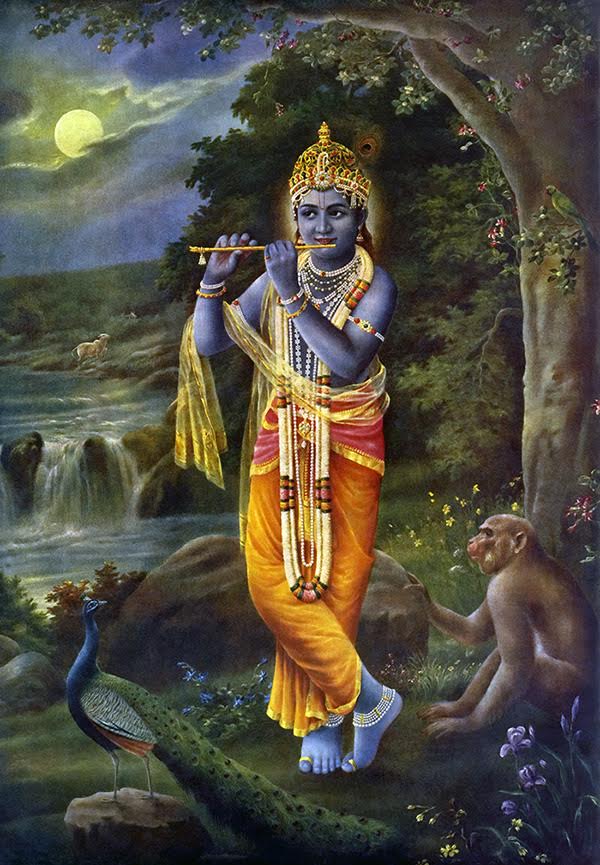
Just as Krishna’s form is sat chit ananda –eternal, full of knowledge and always blissful – the individual soul, when restored to her natural condition, is also sat chit ananda by nature – eternal, full of knowledge and always blissful. The individual living entities, being Krishna’s parts and parcels, possess these attractive qualities, to a limited degree in the material world. This attractiveness of the living beings is manifested to a far greater degree in the spiritual realm, though we can never be the equal of Krishna.
We are like Krishna in quality but not in quantity, for He is infinite, while we are infinitesimal. Just as a drop of sea water is one in quality with the ocean, being wet and salty. But the drop is never equal to the entire ocean in quantity. So we are simultaneously one with and yet different to Krishna. We are one in quality but different in quantity. The more we appreciate Krishna’s attractive qualities, the more we manifest these qualities within ourselves.
The Supreme Lord is known as Krishna. Krishna means “the All-Attractive One.” All attractive features find fullness in Krishna. He possesses all knowledge, all beauty, all strength, all wealth, all fame, and all renunciation and humility. He is all sweetness and all kindness. He is the reservoir of all attractiveness. Everyone is searching for the perfect person – everyone wants to love and be loved, but only Krishna, the all-attractive person, can fully satisfy us for all eternity. It is natural for the soul to love other souls, because we are all children of the same father, all brothers and sisters.
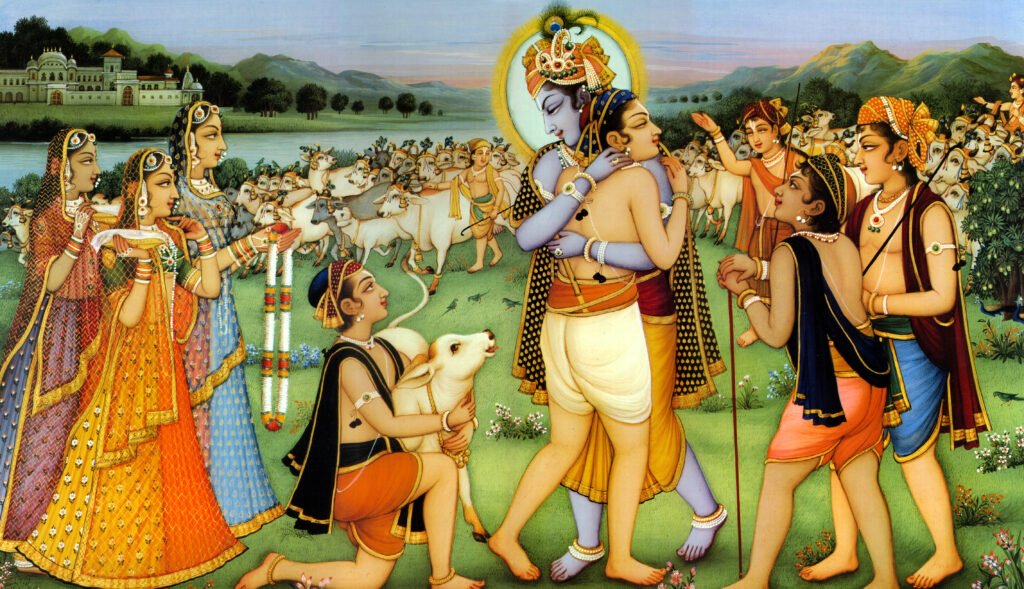
But if we fall in love with a body and think we have found the perfect person – take shelter of that person – then we are destined to suffer loneliness and pain. Eventually we will have to leave our body or they will have to leave their body and we will be alone again. This happens lifetime after lifetime in the material world. And if we are unable to actually perceive that the person we are attracted to is a spark of God, the eternal soul within the material body, then we are simply relating to a corpse.
But if we place our love on the Supreme Person then our suffering will be over – we will go to Him and live eternally in perfect happiness with the Supreme all-attractive person. And we will have innumerable enlightened, perfect, loving souls as our dear friends. We will all have deathless spiritual bodies composed of eternity, knowledge and bliss, and we will not be forced to take on another material body. This is the end result of this bhakti-yoga chanting process. Only by loving Krishna can we be saved from repeatedly experiencing heartbreak and loneliness lifetime after lifetime.
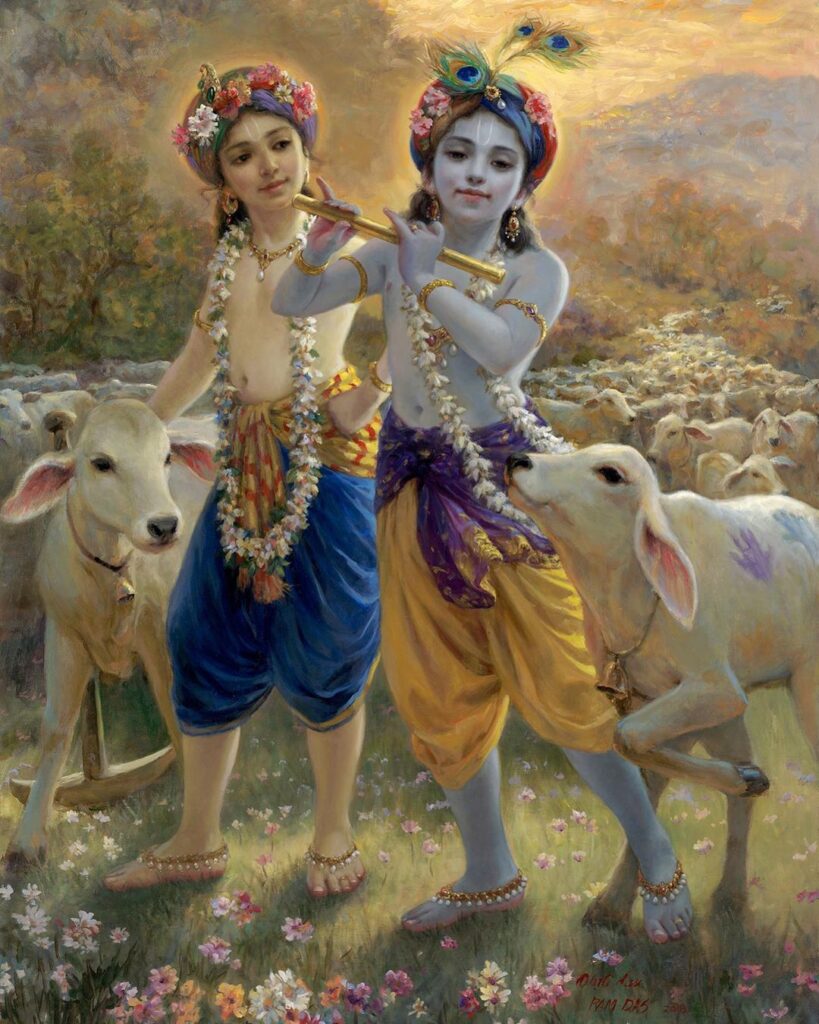
Srila Bhaktivedanta Swami describes Krishna’s attractive features in the tenth chapter of his book, The Teachings of Lord Chaitanya:
Krishna moves freely amongst His friends as a cowherd boy in Vrindavan, and when He plays His flute, all living creatures, mobile and immobile, become overwhelmed with ecstasy. They quiver, and tears flow from their eyes. … He is the master of all riches, all strength, all fame, all beauty, all knowledge and all renunciation. And out of these, His perfect beauty is His conjugal attraction. The form of Krishna, the conjugal beauty, is eternally existent in Krishna alone … The body of Krishna, the ocean of eternal beauty of youth, can be seen to move in waves of beauty. There is a whirlwind at the sound of His flute, and those waves and that whirlwind make the hearts of the gopis flutter like dry leaves on trees, and when those leaves fall down at Krishna’s lotus feet, they can never rise up again. There is no beauty to compare with Krishna’s, for no one possesses beauty greater than or equal to His. … Such is the greatness of the super-excellent beauty of Krishna, the everlasting mine of all beauty. It is from that beauty that all beautiful things emanate.


Leave A Reply